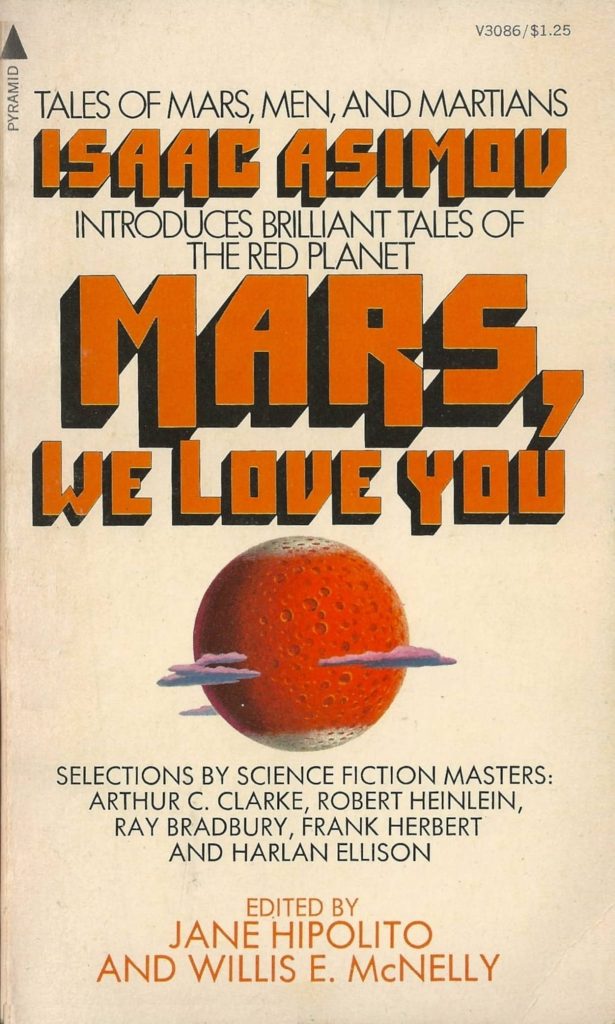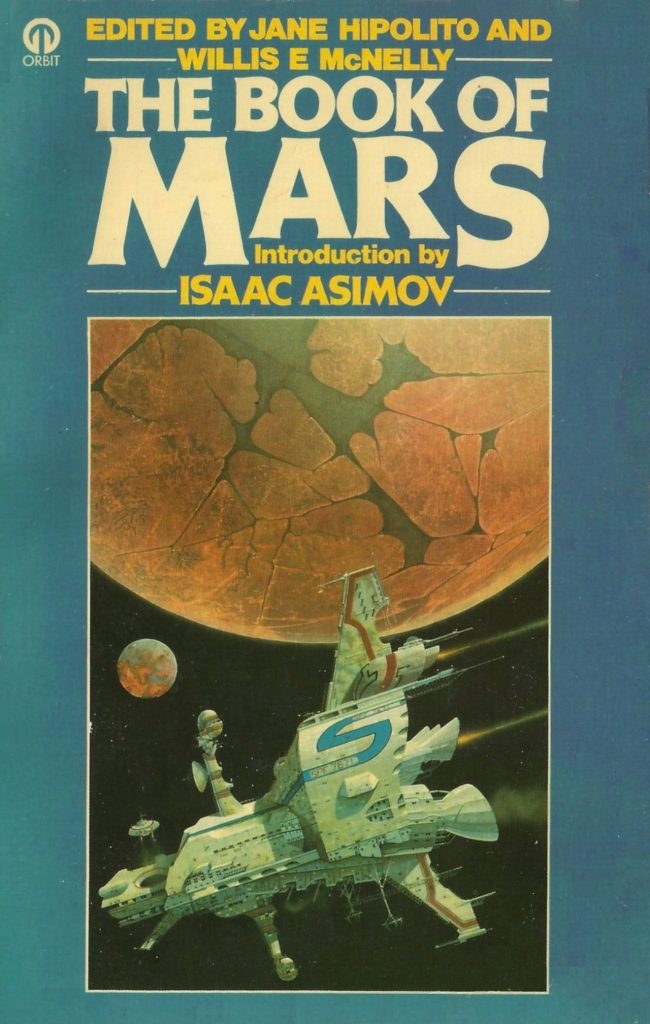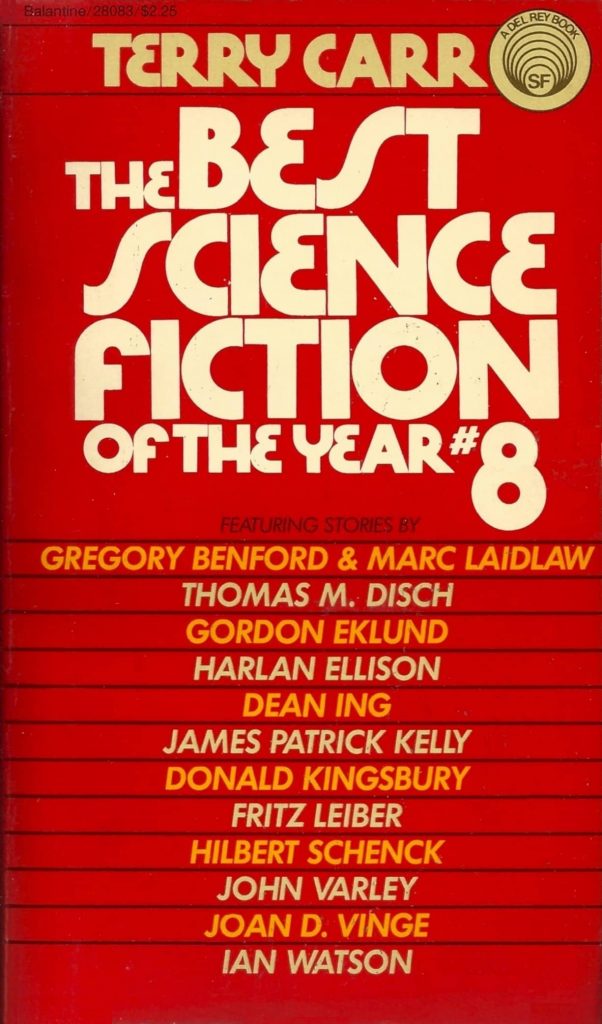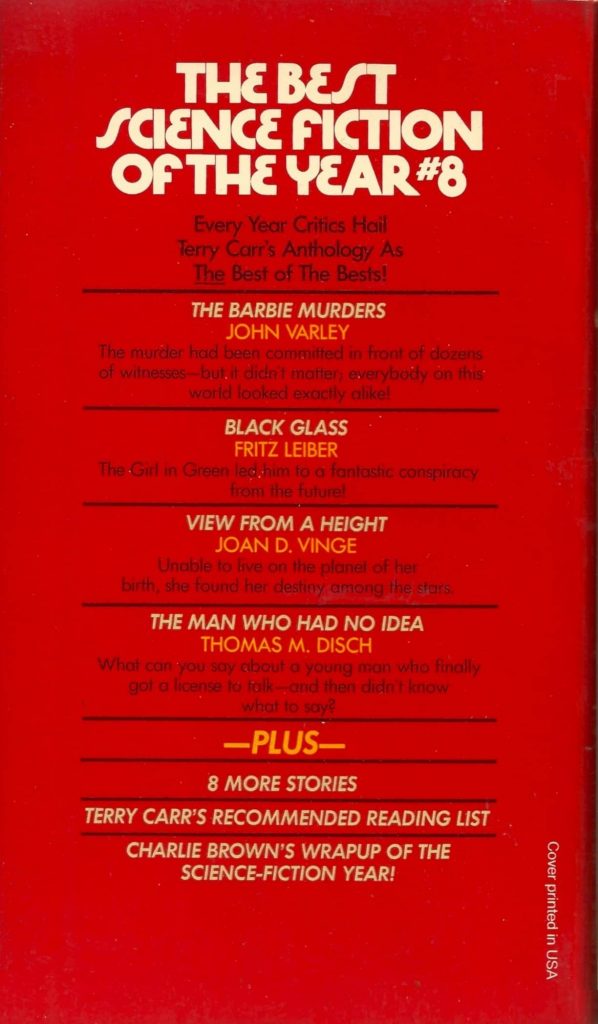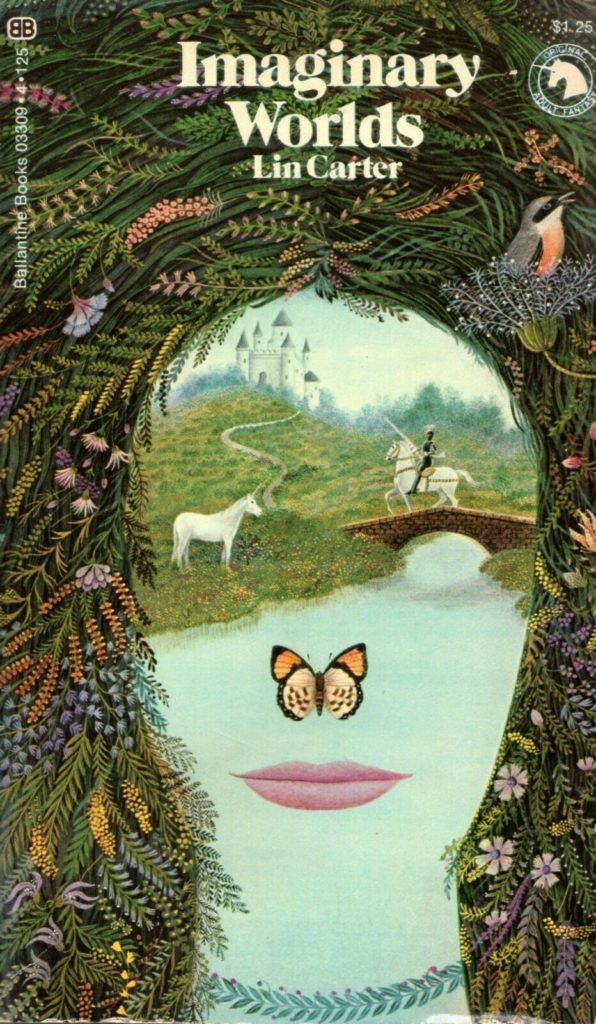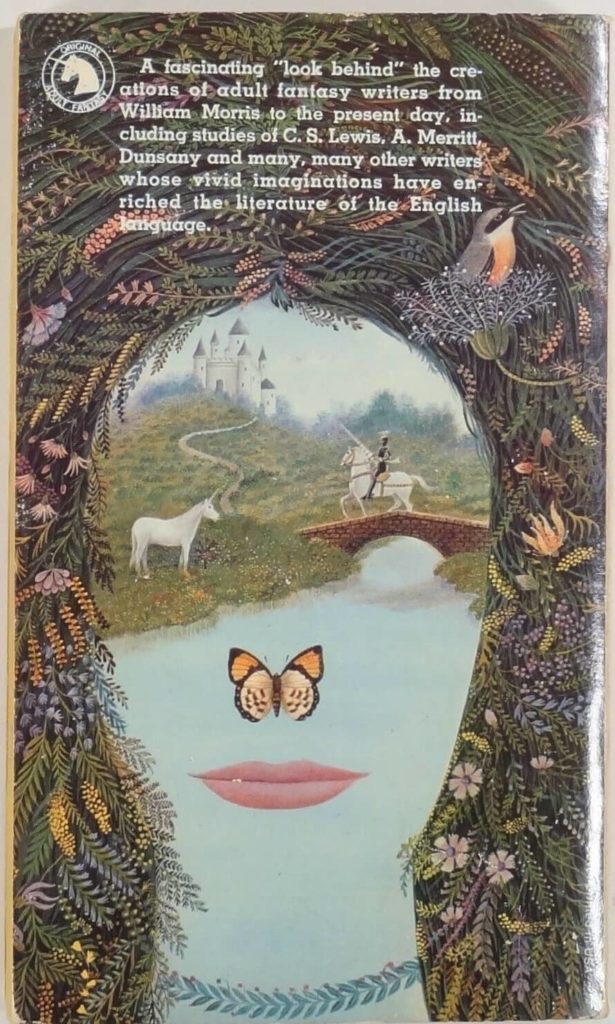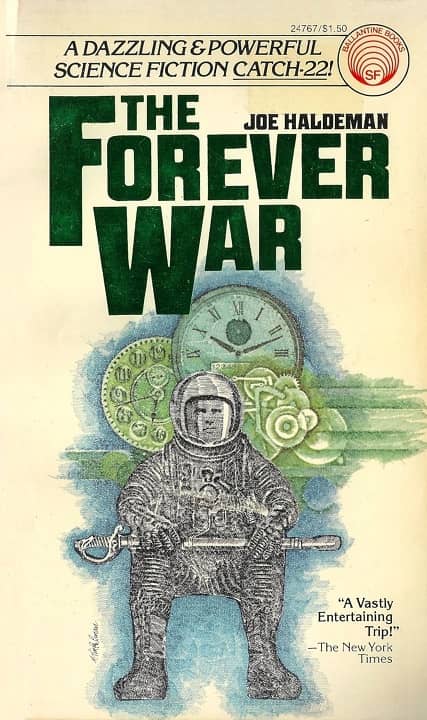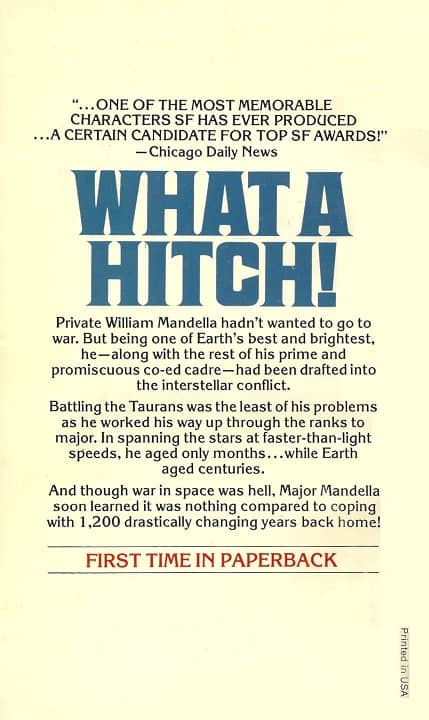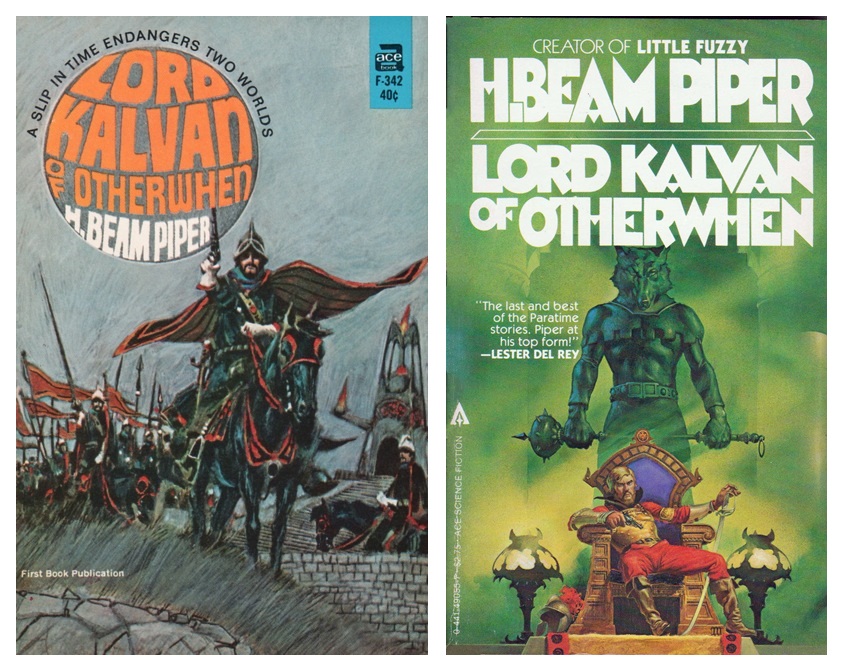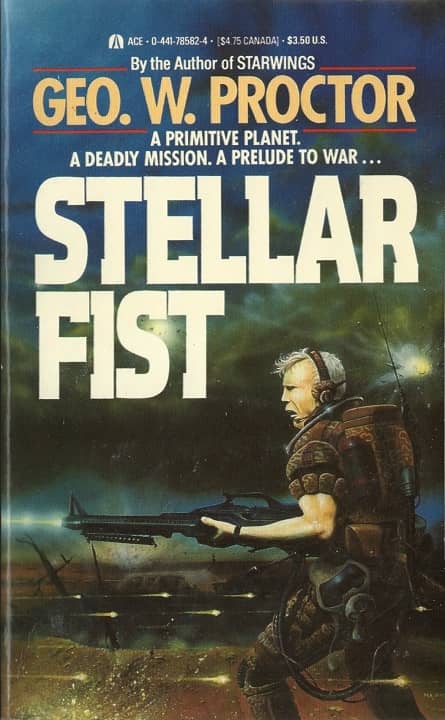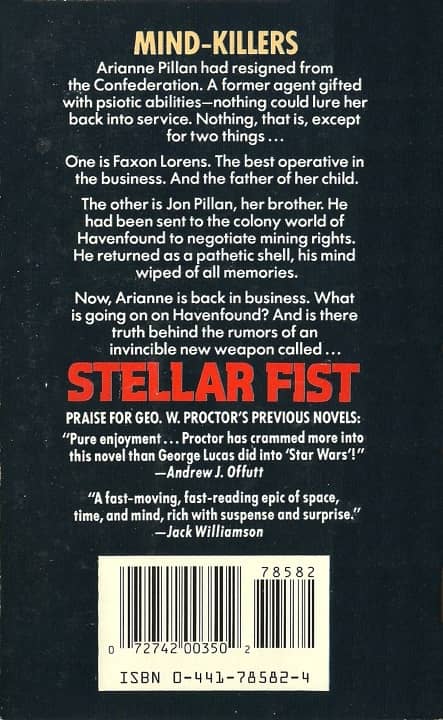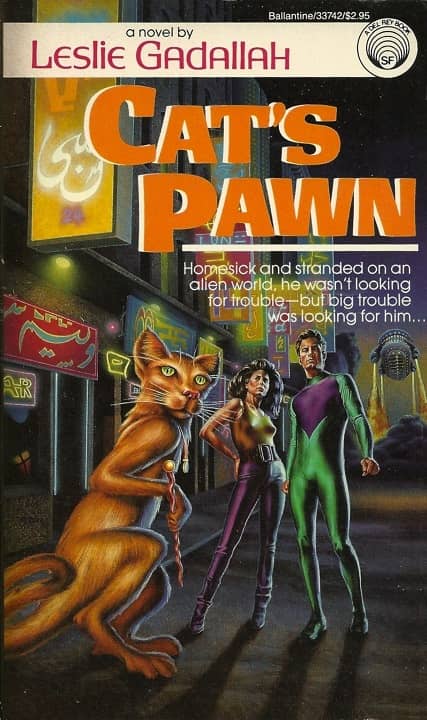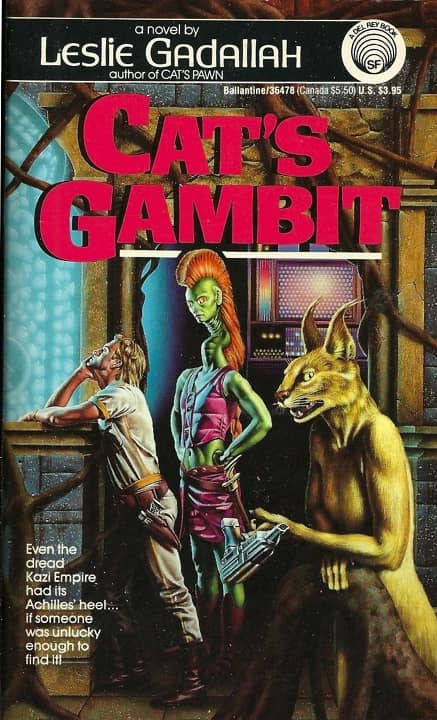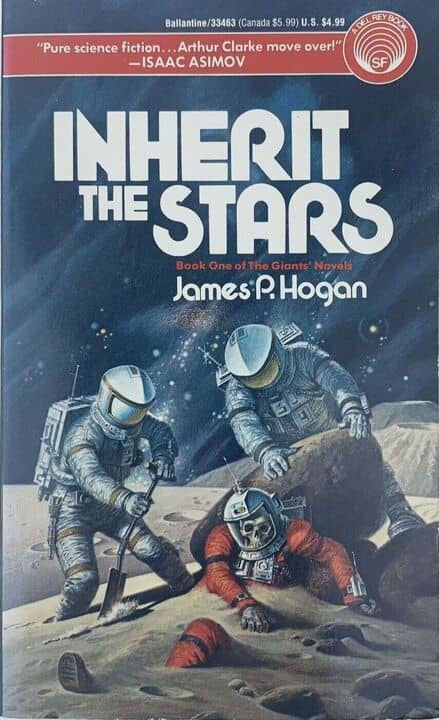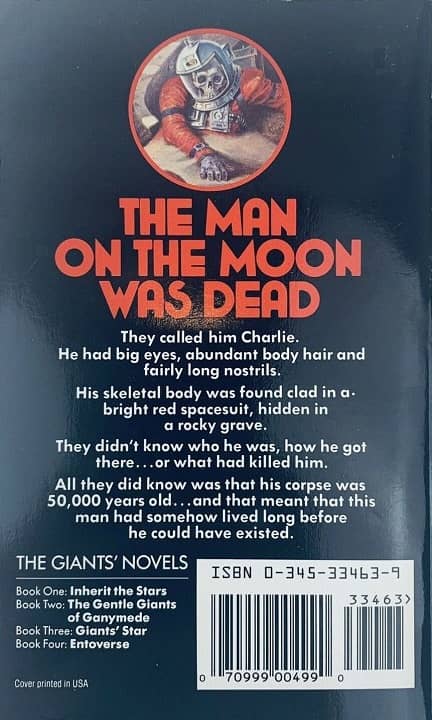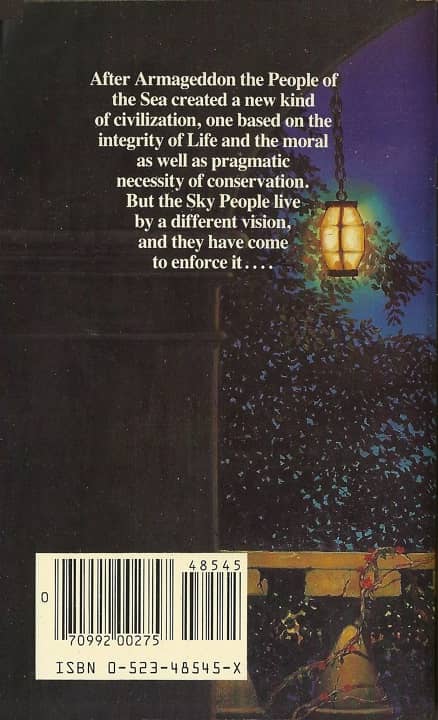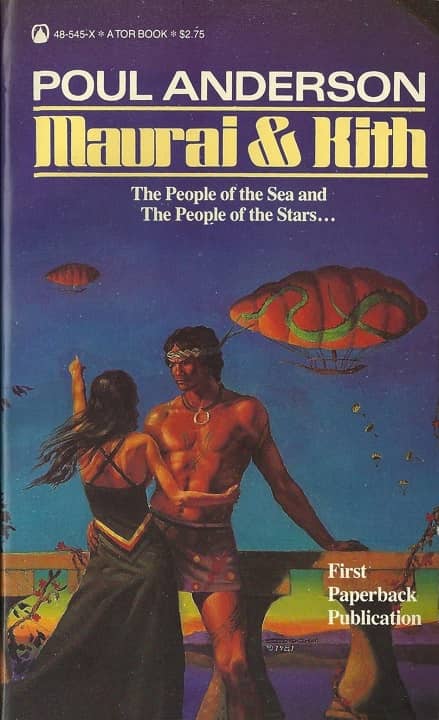Maurai & Kith (Tor Books, 1982). Cover art by Thomas Kidd
Uber-editor Jason M. Waltz kindly invited me to write the introduction to his new anthology The Lost Empire of Sol: A Shared World Anthology of Sword & Planet Tales, co-edited by Black Gate blogger Fletcher Vredenburgh, a terrific new shared-world volume that contains new stories by Howard Andrew Jones, E.E. Knight, Mark Finn, Keith Taylor, Joe Bonadonna and David C. Smith, and many more. As I was putting it together I realized that my concept of Sword-and-Planet is probably a little displaced from the modern definition. Nowadays it refers very specifically to John Carter-like tales fantasy adventure on far-off planets, as Howard Andrew Jones and I explored in our 2019 column over at Tor.com, Five Classic Sword-and-Planet Sagas (written under my Todd McAulty pseudonym).
But I tend to agree with Gardner Dozois, who used the term far more broadly to refer to old-school science fiction, and especially pulp-inspired tales of adventures in exotic locales. One of my favorite anthologies is his 1998 volume The Good Old Stuff: Adventure SF in the Grand Tradition, which I reviewed for the SF Site way back in 1999, and which is packed with exemplary examples. Here’s what I said at the time.
“Old Stuff” refers here to the spirit of early SF — the grand Space Opera, the planetary romance, what Dozois calls “the lush sword-and-planet” tale. Collected here are a fine assortment of short stories and novellas which celebrated that tradition, and in some cases took it in significant new directions.
There are tales of far exploration into the vastness of the galaxy in the face of hostile opposition (A.E. van Vogt’s “The Rull”), unknowable ancient alien civilizations (“The Last Days of Shandaker,” by Leigh Brackett), mysterious and deadly inter-dimensional invaders (James H. Schmitz’s superb, and oddly pastoral, “The Second Night of Summer”), rites of succession for a Galactic Empire (Jack Vance’s “The New Prime”), and brave men and women faced with terrible peril (just about any of them, really, but most especially Poul Anderson’s swashbuckling novella of intrepid explorers on a post-apocalyptic Earth coming face-to-face with strangely advanced barbarians from the far continent of Nor-Merika, “The Sky People.”)
I’d been a Poul Anderson fan for two decades by the time I read “The Sky People,” but I’d never read anything like that story, and it sent me scrambling to find more. That led me to Maurai & Kith, a 1982 Tor collection that gathers all the short stories in the series, plus two tales in his semi-related Kith series of early interstellar explorers in the 21st and 22nd centuries. It’s a volume that belongs in the collection of every SF fan.
…
Read More Read More
